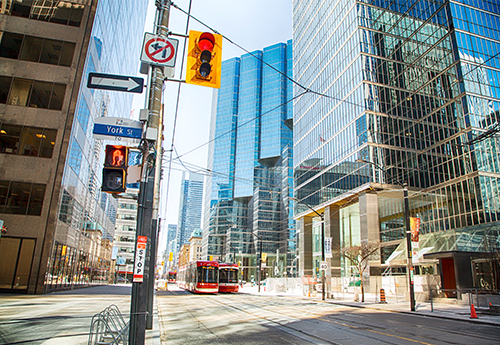Will Ultra-Low Interest Drive Cap Rates Down Further?

Recent developments in the capital markets sparked by COVID-19 fears has, amongst other things, seen the 10-Yr US Treasury plunge to below 1%. While the wider stock market has seen a large sell-off in recent days, underlying fundamentals of the economy remain strong despite what will likely be a weak Q1.
The effect of the low interest rates will have an immediate effect for borrowers. Reduced costs should stimulate a wave of refinancing and new lending. What is less clear is whether this is a transient phenomenon or if we’re entering a new regime of semi-permanently lower rates (i.e. <1.5%).
We’ve previously looked at our data to try and tease out how long it takes for interest rate moves to affect cap rates on STNL assets. What we discovered is that it takes 90-120 days to see any movement in cap rates, so for at least a quarter we should expect to see the spread on STNL and the 10-Yr to widen.
If in fact, we are entering a new semi-permanent lower interest rate regime it will be interesting to see where the spreads ultimately get. For example, today, the lowest cap rates that you’ll find in the STNL market (excluding California) are around 4%. Tenants like Chick-fil-A, McDonald’s and Wawa trade in these ranges. That however was in a world with a +/- 2% 10-Yr. At a +/-1% 10-Yr will that mean we’ll see these deals trading at 3% cap rates?
It seems unlikely that cap rates on the most desirable properties could get much lower than they are now. We often think of the spreads as being composed of premiums for things like illiquidity and credit risk and in general they stay consistent over longer lengths of time (i.e. a year or more). Importantly though, there’s another premium that needs to be factored in here and that’s one of investment size. In other words, the size of the investment also comes into play when investors are looking to alternatives. Purchasing a commercial real estate investment isn’t comparable to buying Bonds and Treasuries because in addition to illiquidity and additional credit risk it also requires the outlay of more capital to take down a deal. Of course, you could buy an equivalent amount of any security but with a STNL property realistically we’re talking about a minimum $1Mil buy-in for anything worth owning.
In light of that, there is some absolute floor in cap rates which investors likely won’t go below because it will concentrate too much risk in one area that they could otherwise diversify.
Barring odd circumstances, in the STNL world that floor is probably around 3.75% which is what we see some of the more desirable properties trade for in places like California.
The opportunity present in the market today is to borrow cheaply and to an extent, it makes sense for an owner to sell at what will likely be the lowest cap rates for this economic cycle. Holding out for lower cap rates is probably not the right move now. With investors focused on stability/predictability of cashflow, the net lease market will continue to see investors jumping in and adding this segment to their portfolios.
Jonathan Hipp is a Principal based in our Washington, D.C. office. He is the managing director of Avison Young’s U.S. net lease group, part of our Capital Markets service offering.
-
 World Economic Forum, Davos 2024: Key Insights for the Commercial Real Estate Industry 31-Jan-2024 2:36:00 PM
World Economic Forum, Davos 2024: Key Insights for the Commercial Real Estate Industry 31-Jan-2024 2:36:00 PM -
 Opportunities arise in a downturn for North Carolina tenants and beyond 27-Mar-2020 9:41:00 PM
Opportunities arise in a downturn for North Carolina tenants and beyond 27-Mar-2020 9:41:00 PM -
 Avison Young completes acquisition of U.K.-based GVA; two companies combine under Avison Young name and brand 8-Feb-2019 11:12:00 PM
Avison Young completes acquisition of U.K.-based GVA; two companies combine under Avison Young name and brand 8-Feb-2019 11:12:00 PM -
 Toronto – A Development Retrospective 28-Feb-2019 11:16:00 PM
Toronto – A Development Retrospective 28-Feb-2019 11:16:00 PM -
 Fourth Annual Apartment Renter Survey Results 18-Nov-2019 8:55:00 PM
Fourth Annual Apartment Renter Survey Results 18-Nov-2019 8:55:00 PM -
 Distressed assets? Not yet… 16-Feb-2021 1:30:00 PM
Distressed assets? Not yet… 16-Feb-2021 1:30:00 PM
